Travel
Flights restart at Hong Kong airport as protesters apologize

HONG KONG — Flights resumed at Hong Kong’s airport Wednesday after two days of disruptions marked by outbursts of violence that highlight the hardening positions of pro-democracy protesters and the authorities in the semi-autonomous Chinese city.
About three dozen protesters remained camped in the airport’s arrivals area a day after a mass demonstration and frenzied mob violence forced more than 100 flight cancellations. Additional identification checks were in place, but check-in counters were open and flights appeared to be operating normally.
Protesters spread pamphlets and posters across the floor in a section of the terminal but were not impeding travellers. Online, they also circulated letters and promotional materials apologizing to travellers and the general public for inconveniences during the past five days of airport occupations.
“It is not our intention to cause delays to your travels and we do not want to cause inconvenience to you,” said an emailed statement from a group of protesters. “We ask for your understanding and forgiveness as young people in Hong Kong continue to fight for freedom and democracy.”
The airport’s management said it had obtained “an interim injunction to restrain persons from unlawfully and wilfully obstructing or interfering” with airport operations. It said an area of the airport had been set aside for demonstrations, but no protests would be allowed outside the designated area.
The airport had closed check-in for remaining flights late Tuesday afternoon as protesters swarmed the terminal and blocked access to immigration for departing passengers. Those cancellations were in addition to 200 flights cancelled on Monday.
Hong Kong police said they arrested five people during clashes with pro-democracy protesters at the airport Tuesday night.
Assistant Commissioner of Police Operations Mak Chin-ho said the men, aged between 17 and 28, were arrested for illegal assembly. Two were also charged with assaulting a police officer and possessing offensive weapons as riot police sought to clear the terminal.
More than 700 protesters have been arrested in total since early June, mostly men in their 20s and 30s, but also including women, teenagers and septuagenarians.
Mak gave no further details, but said additional suspects were expected to be arrested, including those who assaulted an officer after stripping him of his baton and pepper spray, prompting him to draw his gun to fend them off.
Hong Kong law permits life imprisonment for those who commit violent acts or acts that might interfere with flight safety at an airport.
More than 74 million travellers pass through Hong Kong’s airport each year, making it “not an appropriate place of protest,” Mak said.
“Hong Kong police have always facilitated peaceful and orderly protests over the years, but the extremely radical and violent acts have certainly crossed the line and are to be most severely condemned,” he said. “The police pledge to all citizens of Hong Kong that we will take steps to bring all culprits to justice.”
That was backed up by a statement on a newly launched government website set up to provide the latest information on the crisis, which said, “The police will take relentless enforcement action to bring the persons involved to justice.”
Hong Kong airline Cathay Pacific said in a statement it had cancelled 272 flights over the past two days, affecting more than 55,000 passengers, while 622 departures and arrivals went ahead.
Cathay also said it has fired two pilots, in an apparent response to their involvement in activity related to pro-democracy protests.
They included one pilot who is “currently involved in legal proceedings.” The airline said earlier this week one of its pilots has been charged with rioting after being arrested during a protest.
It said the second fired pilot “misused company information,” but gave no further details. The Hong Kong Free Press reported that the pilot posted a photo of a cockpit screen on an online forum used by protesters.
The airport disruptions have escalated a summer of demonstrations aimed at what many Hong Kong residents see as an increasing erosion of the freedoms they were promised in 1997 when Communist Party-ruled mainland China took over what had been a British colony.
While Hong Kong’s crucial travel industry suffers major losses, the city’s reputation as a well-regulated centre for finance is also taking a hit. Some 21 countries and regions have issued travel safety alerts for their citizens travelling to Hong Kong, saying protests have become more violent and unpredictable.
The demonstrators are demanding Hong Kong leader Carrie Lam step down and scrap proposed legislation under which some suspects could be sent to mainland China, where critics say they could face torture and unfair or politically charged trials.
Lam has rejected calls for dialogue, saying Tuesday the protesters were threatening to push their home into an “abyss.”
In a statement Wednesday, the Chinese Cabinet’s liaison office in Hong Kong said the protesters had “entirely ruptured legal and moral bottom lines” and would face swift and severe repercussions under Hong Kong’s legal system.
“Their behaviour shows extreme contempt for the law, seriously damages Hong Kong’s international image and deeply hurts the feelings of the broad masses of their mainland compatriots,” the statement said.
Most of the protesters left the airport Tuesday after officers armed with pepper spray and swinging batons tried to enter the terminal, fighting with demonstrators who barricaded entrances with luggage carts. Riot police clashed briefly with the demonstrators, leading to several injuries and prompting at least one officer to draw a handgun on his assailants.
The burst of violence included protesters beating up at least two men they suspected of being undercover Chinese agents. Airport security appeared unable to control the crowd, and paramedics later took both men away. Police have acknowledged using “decoy” officers, and some protesters over the weekend were seen being arrested by men dressed like demonstrators — in black and wearing face masks.
Hu Xijin, editor-in-chief of the Global Times, identified one of the men as a journalist at the nationalistic Chinese tabloid.
“Fu Guohao, reporter of GT website is being seized by demonstrators at HK airport,” Hu wrote on his Twitter account. “I affirm this man being tied in this video is the reporter himself. He has no other task except for reporting.”
Protesters on Wednesday apologized that some of them had become “easily agitated and over-reacted.” On posters, the demonstrators said they have been “riddled with paranoia and rage” after discovering undercover police officers in their ranks.
Earlier this week, the central government in Beijing issued an ominous characterization of the protest movement as something approaching “terrorism” — a label it routinely applies to nonviolent protests of government policies on the environment or in minority regions such as Xinjiang and Tibet.
President Donald Trump tweeted that U.S. intelligence believes that the Chinese government is moving troops to its border with Hong Kong and that, “Everyone should be calm and safe!”
While China has yet to threaten using the army — as it did against pro-democracy protesters in Beijing in 1989 — recent police exercises across Hong Kong’s border with mainland China were a sign of its ability to crush the demonstrations, even at a cost to Hong Kong’s reputation as a safe haven for business and international exchange.
Images on the internet showed armoured personnel carriers belonging to the People’s Armed Police driving in a convoy Monday toward the site of the exercises.
___
Associated Press video journalist Katie Tam in Hong Kong and writer Kelvin Chan in London contributed to this report.
Vincent Thian And Yanan Wang, The Associated Press
Business
Here’s why your plane ticket is so expensive
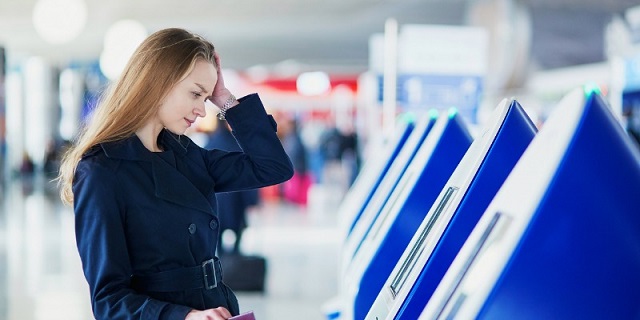
From the Fraser Institute
By Alex Whalen and Jake Fuss
While the strike by WestJet mechanics lasted only a few days, many Canadian air travellers faced long delays and cancelled flights. More broadly, according to the Canadian Transportation Agency, customer complaints have hit an all-time high.
Yet many dissatisfied travellers likely don’t realize that Ottawa heavily contributes to their frustrations. Let’s look at the various ways federal policies and laws make air travel worse in Canada.
First, federal laws insulate Canada’s airlines from competition. Foreign airlines are subject to highly restrictive “cabotage” laws which, for example, dictate that foreign airlines cannot operate routes between Canadian cities. At the same time, foreign investors are forbidden from owning more than 49 per cent of Canadian airlines. By restricting international participation in the Canadian air travel market, these laws both deprive Canadian consumers of choice and insulate incumbent airlines from competition. When consumers have more choice, incumbents have a greater incentive to improve performance to keep pace with their competitors.
Second, a wide array of taxes and fees heavily influence the cost of airline tickets in Canada. Airport improvement fees, for example, average $32.20 per departing passenger at airports in Canada’s 10 largest markets. In contrast, airport improvement fees in the United States cannot exceed $4.50. And last year the Trudeau government increased the “air travellers security charge” by 32.85 per cent—this fee, which now ranges from $9.94 to $34.82 per flight, is higher in Canada than the U.S. across all flight categories. On the tax front, in addition to fuel taxes including the federal carbon tax, the federal excise tax on unleaded aviation gasoline in Canada is 10 cents per litre compared to 6.9 cents per litre in the U.S. And the U.S., unlike Canada, does not apply sales taxes to aviation fuel.
Third, air travel is a heavily regulated sector. Federal legislation generates thousands of provisions airlines must follow to operate legally in Canada. Of course, some regulation is necessary to ensure passenger safety, but each regulation adds administrative and compliance costs, which ultimately affect ticket prices. To lower the cost of air travel, the federal government should reduce the regulatory burden while maintaining safety standards.
Lastly, the ownership model of Canada’s airports results in a yearly transfer of rent to the federal government. The federal government used to own Canada’s national system of airports until they were transferred to private not-for-profit corporations in the early 1990s. However, these airports must still pay rent to the federal government—nearly half a billion dollars annually, according to the Canada Airports Council. As with the other examples listed above, these costs are ultimately passed on to consumers in the form of higher ticket prices.
While a precise estimate is difficult to obtain, various government policies, taxes and fees comprise a large share of the cost of each airline ticket sold in Canada. With complaints from travellers at all-time highs, the federal government should reduce the regulatory burden, increase competition, and lower fees and taxes. Policy reform for air travel in Canada is long overdue.
Authors:
Alberta
Just in time for Canada Day weekend! Crescent Falls ready to be enjoyed again
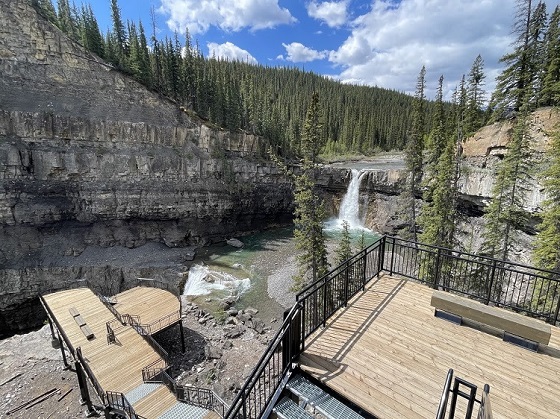
The new staircase structure and viewing platform are among many upgrades that visitors can look forward to at the reopening Crescent Falls Provincial Recreation Area. (Credit: Alberta Parks).
The popular Crescent Falls Provincial Recreation Area reopens following a significant capital investment to improve visitor safety and experiences.
Crescent Falls Provincial Recreation Area is ready to welcome visitors back to enjoy one of the most remarkable, accessible waterfall viewing opportunities in Alberta. The upgrades at Crescent Falls will help improve the park’s visitor experience. Guests can expect expanded parking, improved access roads, trails and day use areas, new and improved viewing areas to take in the falls and upgraded safety measures, including signage and wayfinding.
The Provincial Recreation Area (PRA) is reopening over the July long weekend after being closed since 2023. Visitors will notice increased public safety upgrades through additions such as new parking lots, a new stair structure to access the lower falls, new pedestrian trails, a new vehicle bridge to access the camping area and a viewing platform to enjoy the Crescent Falls.
“We are thrilled to welcome visitors back to Crescent Falls Provincial Recreation Area in time for the Canada Day long weekend. These additions will help visitors to safely access and enjoy the area’s natural beauty. Parks are for people and Alberta’s government will continue to invest in high-quality outdoor recreation opportunities.”
“Today marks a significant milestone for our community as we reopen the Crescent Falls Provincial Recreation Area following extensive upgrades. Our province is well known for its incredible natural beauty, and these improvements will make our backcountry more accessible and ensure that Albertans and those visiting our great province can continue to explore our stunning landscapes for years to come.”
-

 2025 Federal Election2 days ago
2025 Federal Election2 days agoResearchers Link China’s Intelligence and Elite Influence Arms to B.C. Government, Liberal Party, and Trudeau-Appointed Senator
-
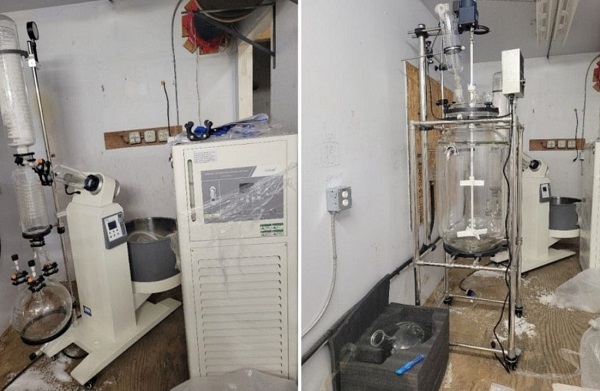
 Business1 day ago
Business1 day agoCanadian Police Raid Sophisticated Vancouver Fentanyl Labs, But Insist Millions of Pills Not Destined for U.S.
-
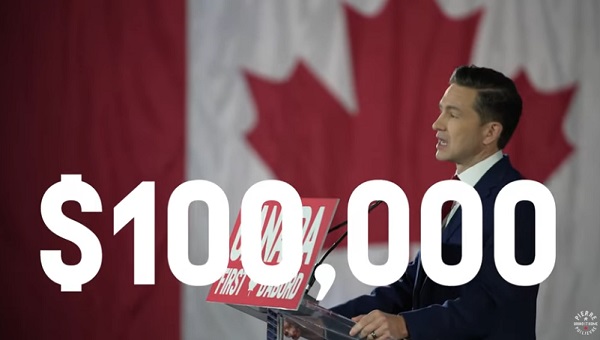
 2025 Federal Election2 days ago
2025 Federal Election2 days agoPoilievre Announces Plan To Cut Taxes By $100,000 Per Home
-
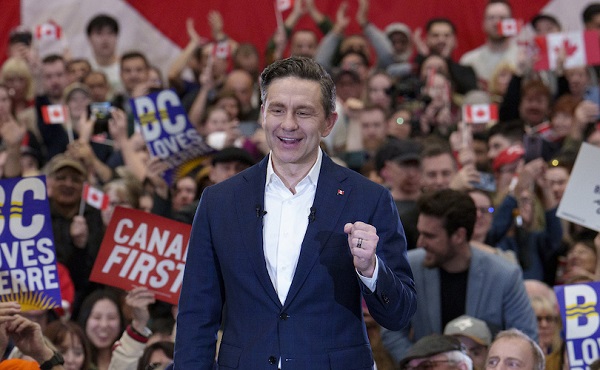
 2025 Federal Election2 days ago
2025 Federal Election2 days agoTwo Canadian police unions endorse Pierre Poilievre for PM
-

 2025 Federal Election15 hours ago
2025 Federal Election15 hours agoTaxpayers urge federal party leaders to drop home sale reporting to CRA
-
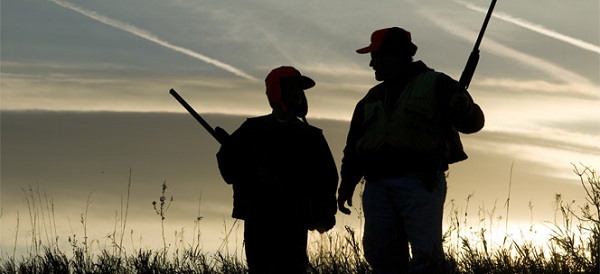
 2025 Federal Election2 days ago
2025 Federal Election2 days agoCarney needs to cancel gun ban and buyback
-
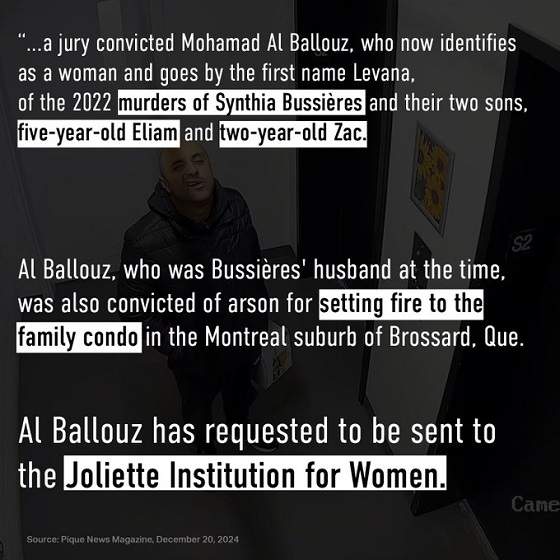
 2025 Federal Election18 hours ago
2025 Federal Election18 hours ago‘Sadistic’ Canadian murderer claiming to be woman denied transfer to female prison
-
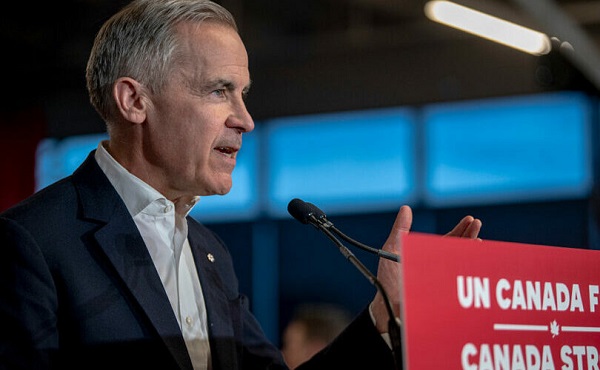
 2025 Federal Election2 days ago
2025 Federal Election2 days agoMark Carney vows to provide sterilizing puberty blockers to children ‘without exception’








